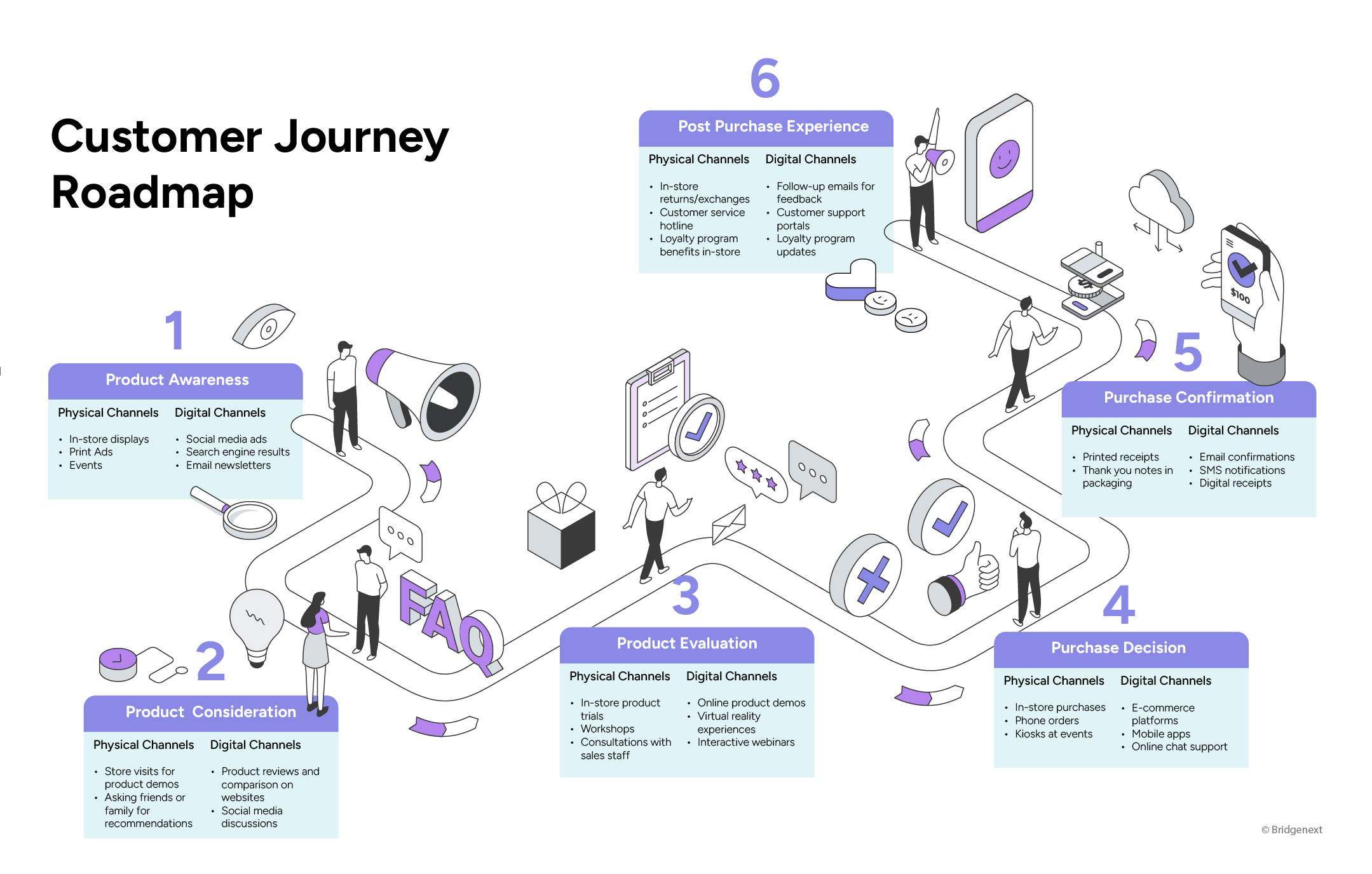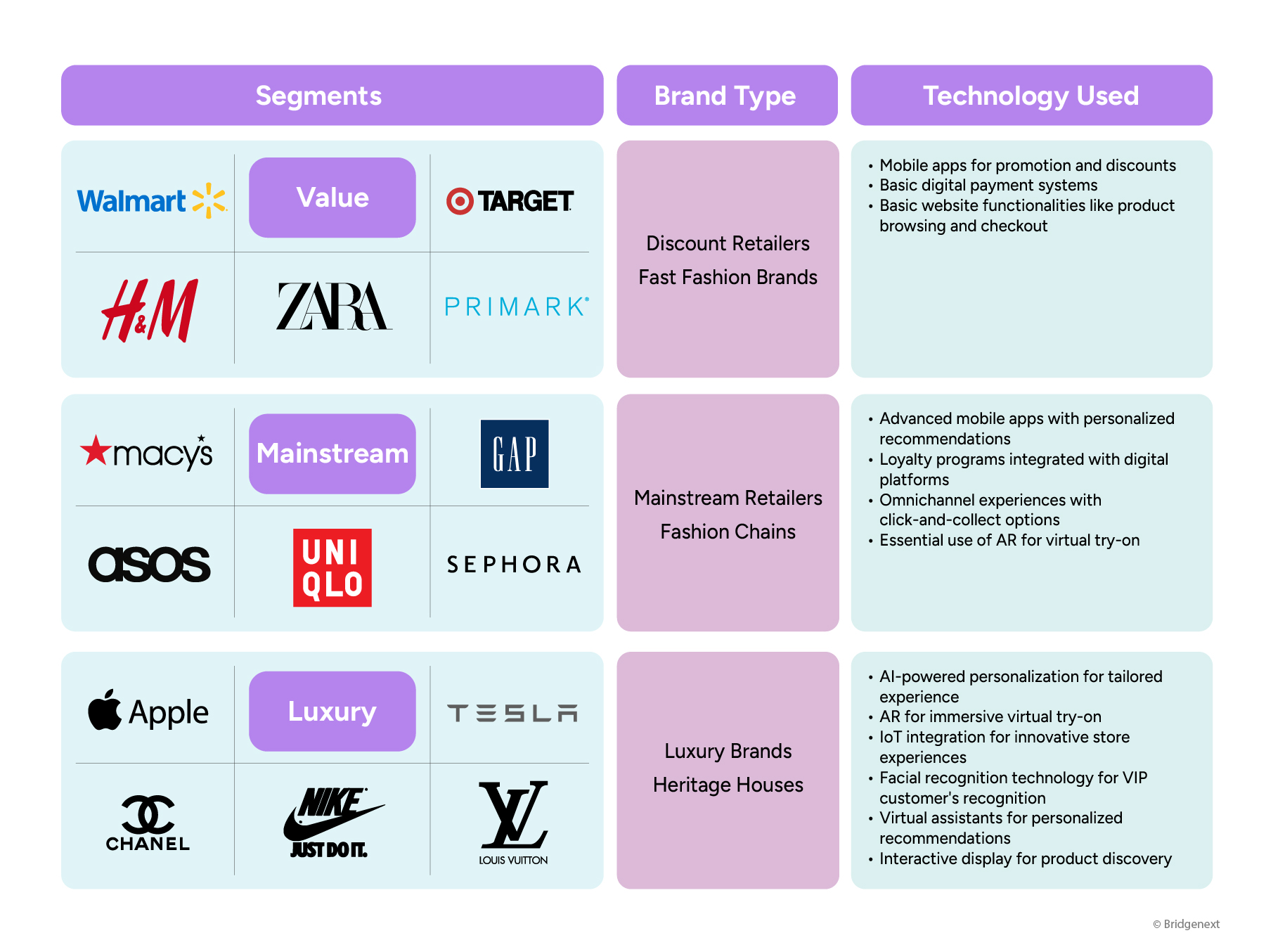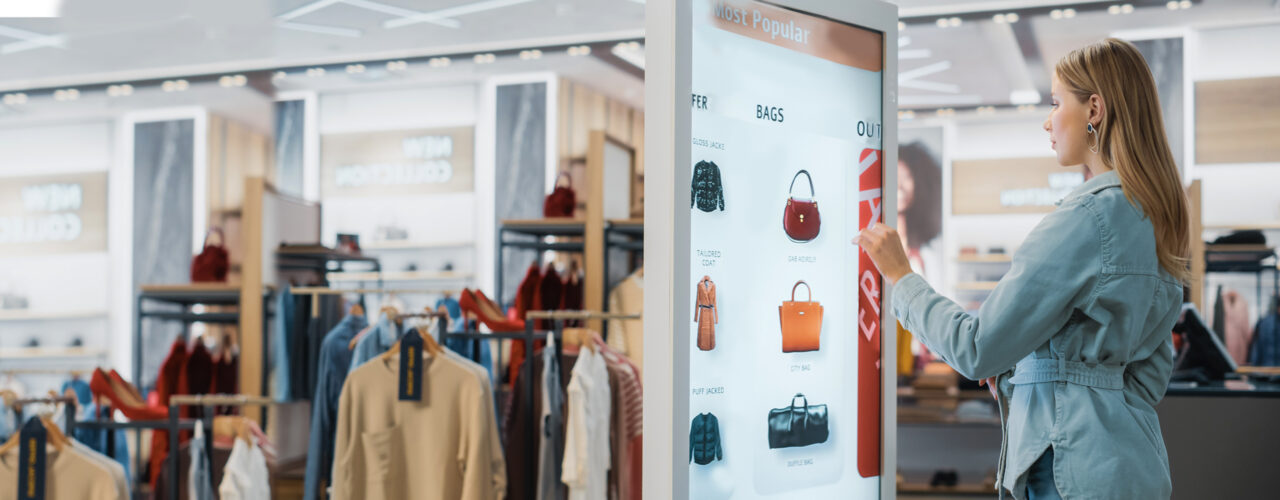Discover how the Retail and Consumer Packaged Goods industry is set to leverage the digital and physical worlds for a convenient and connected customer journey that resonates well with their brand values.
Introduction
In the evolving retail landscape, the clash between the convenience of online shopping and the irreplaceable sensory experience of in-store shopping has sparked ongoing debate. The shift towards digital experiences in retail stemmed from the convenience it offers, yet certain aspects of in-store experiences still need to be realized. This paradox accentuates that physical stores are not becoming obsolete; they need a strategic infusion of technology while preserving their intrinsic relevance. While some argue for the supremacy of e-commerce, consumers have made their stance clear—they want both.
This dichotomy presents a new challenge for the Retail industry, which was once focused solely on creating welcoming and navigable store layouts. Half the customers desire product information without physically handling items, yet many still prefer the tactile experience before purchase. The National Retail Federation highlights how 75% of consumers initiate their online shopping journeys, but 65% turn to in-store experience during the consideration phase.
- Harvard Business Review reinforces this notion, citing a study where Phygital experience lead to a 30% increase in sales conversion.
- By 2026, e-commerce will account for up to 24% of global retail sales, while the other 76% will go to phygital stores.
Projections indicate a continued blend of e-commerce and brick-and-mortar sales, emphasizing the enduring relevance of physical and digital strategies. This convergence underscores retailers’ need to harmonize digital innovation with traditional retail practices for optimal sales outcomes. This blog delves into the Phygital landscape’s intricacies and how brands leverage emerging technologies while maintaining relevance with their customers and brand story.
Phygital Customer Journey Mapping – Checkpoints and Components
A customer’s journey goes through various touchpoints before buying a product, highlighting the digital and physical channels customers interact with. That journey is the foundation of the Physical and digital shopping landscape, where integrating digital technologies and physical environments enhances the overall customer experience. Let’s dig deeper into customer journey mapping:
Building upon this consumer demand for blended experiences, successful retailers are crafting a blend of physical and digital customer experience strategies beyond mere integration—creating seamless, immersive journeys. These strategies have a solid technical foundation and emphasize connectivity, personalization, and flexibility.

Connectivity
First, retailers invest in robust connectivity solutions, bridging the gap between online and in-store experiences. This includes innovative marketing solutions that synthesize customers’ digital and physical interactions, providing a unified view that enhances engagement and drives brand loyalty.
Personalization
The backbone of the Phygital landscape lies in effectively leveraging data. By integrating online and in-store data, retailers can deliver personalized experiences that resonate with individual preferences and behaviors.
Flexibility
Phygital experiences are not just about blurring the lines between digital and physical— they’re about creating a harmonious ecosystem where each touchpoint complements the other, amplifying the overall shopping experience and ultimately driving business growth. This extends to optimizing website functionalities such as search, browsing, and recommendations while ensuring flexible inventory management that adapts to varying customer demands across different touchpoints.
It’s evident how seamlessly technology and physical spaces are intertwined. That’s why retailers are exploring dynamic features that bridge the digital-physical gap and captivate today’s hybrid shoppers, making their customer journey highly convenient.
Features Luring in the Hybrid Shoppers
As retailers explore Phygital strategies, they implement features that bridge the gap between online convenience and in-store experiential value.
Extending User Experience (UX) to Customer Experience (CX)
Allowing customers to test the product in-store enhances their shopping experience and increases the likelihood of additional purchases. For example, if a customer orders a record player online, the retailer could entice them with an in-store discount on high-quality speakers. This not only upsells the initial purchase but also taps into the experiential nature of products like speakers, where sound quality matters.
Leveraging Data for Personalized Recommendations and Reminders
AI-driven product recommendations based on consumption cycles further enhance convenience, prompting shoppers to replenish consumables at the right time. For example, by merging past purchase data and in-store location, retailers can send flashing reminders or push notifications for last-minute forgettable items, saving consumers from immediate trips to the store.
Enabling Beacon Technology
Integrating digital tools like store maps and product location features into mobile apps to enhance the in-store journey. Retailers can streamline entire shopping journeys by combining shopping lists, product locations, and store maps, guiding customers efficiently through the store and enhancing their overall experience.
Managing Inventory and Minimizing Disappointments
Confirming product availability in real-time and offering alternative options ensures customers find what they need, reducing frustration and increasing satisfaction.
These are some of the widely used features backed up by emerging technologies that are helping retailers create a seamless blend of digital convenience and in-store engagement, catering to the evolving expectations of hybrid shoppers and fostering long-term loyalty. As we discuss these enticing features, we should also explore the depths of tech trends enabling them.
Emerging Trends in Phygital Landscape
As retailers continue to innovate in physical and digital shopping experiences, several emerging trends are shaping the future of retail landscapes.
Livestream Shopping
This trend combines the excitement of live events with the convenience of online shopping. Imagine a live fashion presentation where viewers can instantly purchase showcased items through clickable product placements, creating a seamless bridge between entertainment and commerce.
AI-Powered Personalization
Another game-changer is transforming traditional retail spaces into personalized havens. Facial recognition technology, for instance, enables tailored in-store experiences by recognizing customers and offering customized recommendations and assistance.
Interactive Displays and Virtual Reality
Blurring the lines between physical and digital realms, retailers leverage interactive screens, allowing customers to virtually try on clothing or visualize furniture within their home’s layout, enhancing the decision-making process and overall shopping experience.
Augmented Reality (AR) Experiences
By allowing customers to overlay digital information, such as product details or virtual try-ons, onto the physical world, retailers can create interactive AR experiences in-store, enhancing product discovery and engagement.
Contactless Payments and Checkout
With the increasing emphasis on hygiene and convenience, contactless payment methods like mobile wallets, QR codes, and biometric authentication are becoming standard in retail stores. Seamless checkout experiences reduce friction and enhance overall customer satisfaction.
Voice-Activated Assistants and Devices
Voice commerce is transforming how customers interact with retailers. It enables hands-free shopping experiences, from placing orders to receiving personalized recommendations based on natural language commands.
With all these tech trends emerging in retail, it’s vital to find a balance where using loads of technology won’t overshadow your brand’s values and customer relations. Relevance is the linchpin for a harmonious blend of digital and physical realms.
Balancing the Phygital Blend with Relevance
As we explore the dynamic landscape of physical and digital retail, one key aspect that must remain at the forefront is relevance. While technological advancements offer exciting possibilities, ensuring these innovations align with the brand’s identity and resonate with the target customer segments is crucial. The modern customer seeks convenience, personal engagement, and digital enhancement, making relevance a central consideration for retailers. Utilizing data and insights becomes pivotal in identifying the touchpoints that connect brands with consumers throughout their journey, fostering continued digital innovation and engagement.
Maintaining relevance while integrating technological innovations is paramount for luxury and heritage brands. These brands are renowned for their exclusivity, architectural aesthetics, product quality, and immersive shopping experiences. Technology should not dilute these elements but rather enhance them. Innovations like Augmented Reality (AR) and interactive tech can seamlessly elevate the customer experience without compromising brand integrity.
Take Chanel, for instance—a renowned French fashion powerhouse. They have intelligently incorporated AI into their stores through AI-powered virtual assistants and virtual try-on tools. This innovation complements their heritage look and feel while offering convenience, luxury customer service, and innovative engagement. The virtual try-on tool suggests beauty products that complement outfit choices, adding a 21st-century layer of innovation to an already exclusive experience.
By carefully selecting and integrating relevant technological advancements, retailers can strike the perfect balance between physical and digital shopping experiences and maintaining brand essence, creating meaningful connections with customers, and driving long-term loyalty. Just like the following brands are doing:

This shows that the essence of success lies in striking a balance—leveraging digital advancements while staying true to brand heritage and customer expectations.
Conclusion
As we look ahead, the evolution of physical and digital retail promises a continued journey of innovation, relevance, and customer-centricity. AI-powered personalization, AR-enhanced try-ons, and IoT-driven store experiences are just a glimpse of the innovative solutions reshaping the in-store landscape. Yet, it’s not merely about adopting the latest tech trends but crafting experiences that resonate with customers, enhance brand identity, and inspire loyalty. And across different segments, retailers are embracing this ethos in unique ways. However, knowing where to start can take time and effort. Here are a couple of practical strategies to help you begin this transformative journey:
- Start by evaluating your current digital and physical touchpoints. Identify gaps and opportunities where digital enhancements can elevate the in-store experience.
- Understand your customer journey and pinpoint moments where technology can add value, such as personalized recommendations, seamless checkout processes, or interactive displays.
- Implement pilot programs for new technologies in a few select locations. This allows you to test and refine the integration of digital tools without disrupting your entire operation.
- Gather customer feedback and use data analytics to measure the impact on customer satisfaction and sales. Technologies to consider include AI-powered personalization, AR for virtual try-ons, and smart shelves for real-time inventory management.
Adopting proven strategies as starters will create a cohesive Phygital retail experience that resonates with your customers and sets the stage for continued innovation and growth.
How Bridgenext Can Help?
Ready to elevate your retail experience with cutting-edge digital solutions? Our customer experience experts specialize in digital realization for retail businesses, empowering you to implement advanced technologies that enhance customer interactions and drive business growth. Our tailored strategies and expertise in leveraging technology ensure that your brand stays relevant, resonates with customers, and stands out in today’s competitive landscape.
Partner with us to unlock the full potential of digital innovation in retail. Contact us today.
References
www.ey.com/en_in/consulting/can-in-store-digital-experience-transform-the-future-of-shopping
www.forbes.com/sites/forbestechcouncil/2023/01/24/the-wide-reach-of-digital-how-retailers-can-boost-in-store-sales-through-the-screen/?sh=7cffd5903713
www.salesforce.com/blog/in-store-digital-experience/#:~:text=Shoppers%20Have%20Gone%20Digital%20%E2%80%94%20Your%20Physical%20Stores,Give%20all%20service%20channels%20a%20personal%20touch%20
www.forbes.com/sites/mikehughes1/2022/10/31/the-future-of-retail-is-phygital/?sh=5c0e15f513b5



